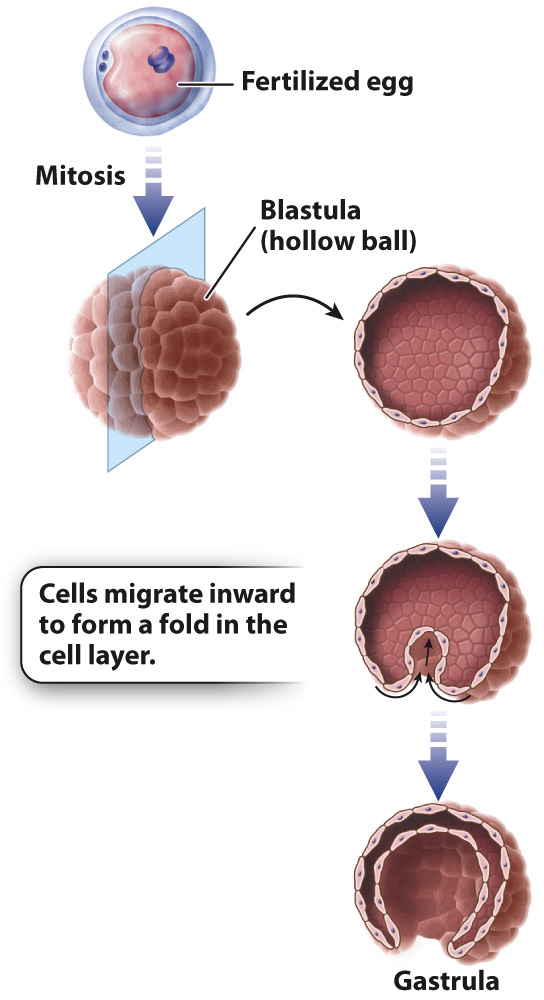Animal cells can move relative to one another.

Having outlined the growth and development of plants, we can appreciate anew the remarkable ballet that characterizes development in animal embryos (Fig. 28.11; Chapter 42). Fertilized eggs undergo several rounds of mitosis to form a hollow ball called a blastula, formed of a single layer of undifferentiated cells. Then something happens that has no parallel in plant development: Unconstrained by cell walls, animal cells can move relative to one another. Blastula cells migrate, becoming reorganized into a hollow ball that folds inward at one location to form a second layer under the first. This multilayered structure is called the gastrula.
Gastrula formation brings new populations of cells into direct contact with one another, inducing patterns of molecular signaling and gene regulation that begin the long process of growth and tissue specification. As cells proliferate, molecular signals are expressed in some cells and diffuse into others, generating what amounts to a three-
Because they are not constrained by cell walls, animals can form organs with moving parts—
Plants and animals, then, display contrasting patterns of development and function that reflect both their independent origins from different groups of protists and the constraints imposed by cell walls in plants.
Quick Check 3 How do plants and animals differ in the ways their cells adhere, communicate, and differentiate during development?
Quick Check 3 Answer
All multicellular organisms have molecules that promote adhesion between cells and communication between cells, but plants and animals have largely distinct sets of molecules for these functions. Plants and animals also exhibit distinct patterns of development, with stem cells called meristems commonly remaining active for life in plants, while tissues and organs differentiate early in animal development. Many of the differences between plants and animals reflect the fact that plant cells have cell walls, whereas animal cells do not.